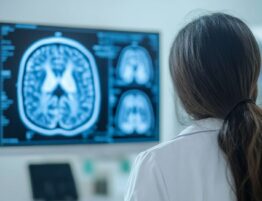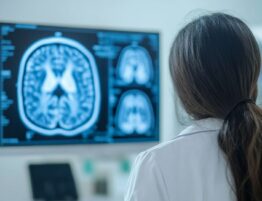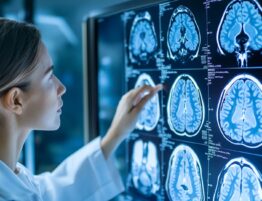If you or a loved one has experienced a seizure, your doctor may recommend an EEG test. An electroencephalogram, or EEG, is a painless, non-invasive procedure that records the electrical activity in your brain. Think of your brain as a complex network of millions of neurons constantly communicating through tiny electrical signals. An EEG test captures these signals using small sensors placed on your scalp, creating a detailed map of your brain’s activity patterns. This technology has been helping doctors diagnose epilepsy and other neurological conditions for decades, and it remains one of the most valuable tools in modern neurology.
For people experiencing unexplained seizures or episodes that might be seizures, the EEG provides crucial information that other tests cannot reveal. While MRI scans show the physical structure of your brain, an EEG shows how your brain functions in real-time. During a seizure, neurons fire in abnormal patterns, creating distinctive electrical signatures that appear on the EEG recording. Understanding what to expect from your first EEG can help ease any anxiety and ensure you’re well-prepared for this important diagnostic step.
Why EEG Is Important for Seizure Evaluation
The EEG test plays a critical role in seizure evaluation because it provides direct evidence of abnormal electrical activity in the brain. During a seizure, groups of neurons fire together in excessive, synchronized bursts. These electrical storms create patterns that are clearly visible on an EEG recording. A neurologist trained in reading EEGs can identify these patterns and determine whether they indicate epilepsy, what type of epilepsy you might have, and which areas of your brain are affected.
There are several reasons why your doctor might order an EEG test for seizure evaluation:
- To confirm an epilepsy diagnosis after you’ve experienced one or more seizures
- To identify the type of seizure disorder you have, as different epilepsies require different treatments
- To locate the seizure focus in your brain, which is particularly important if surgery is being considered
- To rule out other conditions that can mimic seizures, such as fainting spells or psychological episodes
- To monitor your response to treatment and adjust medications as needed
Preparing for Your EEG Test
Proper EEG preparation is essential for obtaining clear, accurate results. Your doctor’s office will provide specific instructions, but here are the general guidelines for getting ready for your first EEG:
Before the test:
- Wash your hair thoroughly the night before or the morning of your test, but don’t apply any hair products, such as gel, spray, mousse, or conditioner
- Get adequate sleep the night before, though in some cases, your doctor may actually ask you to sleep less than usual to increase the chances of capturing abnormal activity
- Continue taking your regular medications unless your doctor specifically tells you to stop
- Avoid caffeine for at least eight hours before the test, as it can affect brain wave patterns
What to bring:
- A list of all current medications and their dosages
- Any previous EEG reports or neurological records
- A comfortable button-up shirt, as you may need to remove a pullover top
- Something to occupy your time if there’s a waiting period
Many patients worry about EEG preparation, but the process is straightforward. The most important thing is to arrive with clean, product-free hair so the electrodes can make good contact with your scalp. If you have thick or long hair, consider how you’ll wash out the electrode paste or gel afterward. Some facilities provide cleaning supplies, but it’s helpful to ask ahead of time.
What Happens During the EEG Procedure
Understanding what to expect during your first EEG can help you feel more comfortable and relaxed during the test. When you arrive at the neurology center, a trained EEG technologist will guide you through the entire process.
The procedure follows these steps:
- You’ll be seated in a comfortable chair or asked to lie down on an examination table
- The technologist will measure your head and mark specific spots where electrodes will be placed
- Small metal disc electrodes will be attached to your scalp using a sticky paste or gel
- The electrodes are connected to wires that feed into the EEG machine
- You’ll be asked to relax while the machine records your brain activity for 20-40 minutes
During the recording, you’ll be asked to follow simple instructions. The technologist may ask you to open and close your eyes, breathe deeply and rapidly for a few minutes, or look at a flashing light. These activities can sometimes trigger abnormal brain wave patterns that help with epilepsy diagnosis. Don’t worry if you feel dizzy during the deep breathing exercise — this is normal and will pass quickly once you return to breathing normally.
The entire process is painless. You won’t feel any electrical sensations, and the electrodes only record signals from your brain — they don’t send anything into your body. If you have a seizure during the test, the technologist is trained to keep you safe and will continue recording to capture this valuable diagnostic information.
Understanding Your EEG Results and Epilepsy Diagnosis
After your EEG test, a neurologist specially trained in interpreting these recordings will carefully analyze your results. This process is both an art and a science, requiring years of experience to distinguish normal brain wave variations from abnormal patterns that indicate epilepsy.
Your brain generates several types of electrical waves, each with different frequencies measured in cycles per second (Hertz). Delta waves are the slowest, theta waves are slightly faster, alpha waves appear when you’re relaxed with eyes closed, and beta waves indicate active thinking. The neurologist looks for disruptions in these normal patterns. Epilepsy diagnosis is supported when the EEG shows epileptiform discharges — sharp spikes, spike-and-wave complexes, or other abnormal patterns that indicate a tendency for seizures.
The neurologist considers several factors when interpreting your EEG:
- The location of any abnormal activity in your brain
- The frequency and pattern of abnormal discharges
- Whether abnormalities appear on one side of the brain or both
- How your brain waves respond to different provocations during the test
- Your clinical history and description of your seizure episodes
It’s important to understand that a normal EEG doesn’t rule out epilepsy. Some people with epilepsy have normal EEGs between seizures, especially after their first test. If your doctor still suspects epilepsy despite a normal result, they may recommend a longer EEG recording or other specialized tests. Conversely, some people without epilepsy occasionally show minor EEG abnormalities. Your neurologist will always interpret your EEG test results in the context of your complete medical history and symptoms to reach an accurate epilepsy diagnosis.
Treatment Options After Epilepsy Diagnosis
Once your neurologist confirms an epilepsy diagnosis based on your seizure evaluation and EEG test results, they’ll work with you to develop a personalized treatment plan. The good news is that seizures can be controlled with medication in about 70% of people with epilepsy, allowing them to live normal, active lives.
Anti-seizure medications work by stabilizing electrical activity in the brain. Your neurologist will select a medication based on your seizure type, age, other medical conditions, and lifestyle factors. Common first-line medications include levetiracetam, lamotrigine, and valproic acid, among others. Finding the right medication often requires patience, as it may take several weeks to determine if a particular drug is effective, and dosages may need adjustment.
Your treatment plan may include:
- Daily anti-seizure medication to prevent future seizures
- Regular blood tests to monitor medication levels and side effects
- Lifestyle modifications, such as maintaining consistent sleep schedules
- Avoiding known seizure triggers like alcohol, flashing lights, or excessive stress
- Keeping a seizure diary to track episodes and identify patterns
If medications don’t adequately control your seizures after trying two or three different drugs, you may have drug-resistant epilepsy. In these cases, your neurologist might recommend additional options such as epilepsy surgery, vagus nerve stimulation, responsive neurostimulation, or dietary therapy like the ketogenic diet. The goal is always to achieve complete seizure freedom with minimal side effects, allowing you to maintain your quality of life and independence.
The Importance of Follow-Up Care at Lone Star Neurology
After your epilepsy diagnosis and the start of treatment, ongoing monitoring is essential for managing your condition effectively. At Lone Star Neurology, our experienced team of neurologists provides comprehensive, compassionate care for every patient with epilepsy.
Regular follow-up appointments allow your doctor to assess how well your treatment is working and make necessary adjustments. During these visits, you’ll discuss any seizures you’ve experienced, medication side effects, and how epilepsy is affecting your daily life. Your neurologist may order periodic EEG tests to monitor your brain activity and see how it responds to treatment. Some patients need repeat EEGs every six months to a year, while others may need them less frequently once their seizures are well-controlled.
We understand that living with epilepsy presents unique challenges. Our goal is not just to control your seizures, but to help you maintain the highest possible quality of life.
At Lone Star Neurology, you’re not just a patient — you’re part of our family, and we’re committed to supporting you every step of the way on your journey to better neurological health.












Please, leave your review
Write a comment: